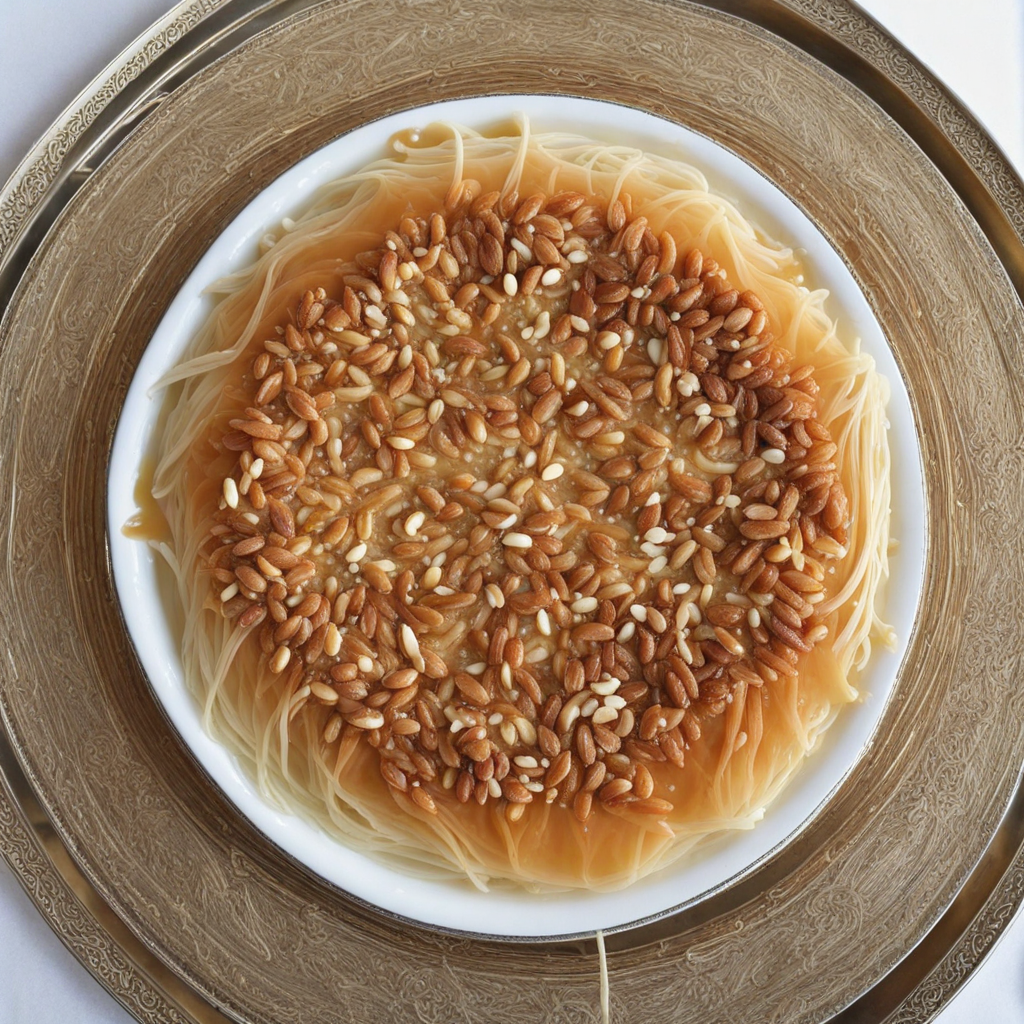Flija
Flija is a traditional dish from Kosovo that embodies the rich culinary heritage of the region. This savory delight is made by layering thin sheets of dough, typically prepared from flour, water, and a pinch of salt, which are then spread out on a large, flat pan. The layers are cooked slowly over an open flame or in a special oven, allowing them to achieve a perfect blend of crispiness and tenderness. The process of making Flija is an art form, often requiring patience and skill, as each layer must be carefully poured and cooked to create a harmonious texture that melts in your mouth.
The unique aspect of Flija is its versatility; it can be made with various fillings that add to its flavor profile. Typically, the dish is enriched with a mixture of cream, cottage cheese, or yogurt, which is spread between the layers. Some variations may incorporate fresh herbs or vegetables, giving it a fresh and vibrant taste. The final product is a beautifully stacked dish that is often enjoyed warm, making it a perfect comfort food for gatherings and family meals.
How It Became This Dish
Fli: A Culinary Jewel of Kosovo Fli, a traditional dish from Kosovo, encapsulates the heart and spirit of the region's rich culinary heritage. The dish is not merely a meal; it represents a tapestry of history, culture, and community that binds the people of Kosovo together. #### Origins The origins of Fli can be traced back to the rural landscapes of Kosovo, where it has been a staple in the diets of local communities for generations. Traditionally, it is made from a simple blend of flour, water, and salt, which is transformed into a layered pancake-like creation. The preparation of Fli is an art form that reflects the resourcefulness and ingenuity of the region's people, particularly during times of hardship when ingredients were scarce. Fli is believed to have roots in the broader Balkan region, where variations of layered pancakes can be found in various forms. The dish likely evolved through interactions among different cultural influences, including Ottoman, Slavic, and Albanian traditions. Each community has contributed to the development of Fli, resulting in subtle variations in preparation and presentation. #### Cultural Significance Fli is more than just a dish; it is a symbol of hospitality, community, and celebration in Kosovo. It is commonly prepared for special occasions, family gatherings, and festive events. The communal aspect of making Fli is particularly noteworthy; families often come together to prepare the dish, sharing stories and laughter as they work side by side. This tradition fosters a sense of unity and connection, transcending generational divides. The dish is often served with various accompaniments, such as yogurt, cheese, or a simple tomato salad, enhancing its flavor and nutritional value. Each family may have its unique recipe or method of preparation, passed down through generations, adding to the dish's cultural significance. Fli also plays a role in traditional celebrations, such as weddings and religious holidays. Its preparation is often viewed as a form of blessing, reflecting the community's values of sharing and togetherness. In many ways, Fli serves as a culinary ambassador, carrying the stories and traditions of the people of Kosovo to the broader world. #### Preparation and Variations The preparation of Fli is a labor-intensive process, often requiring skill and patience. The basic ingredients include flour, water, and salt, which are mixed to create a smooth batter. The batter is then poured onto a large, flat baking surface, typically a special pan called a "sac," which is heated over an open flame or hot coals. The unique aspect of Fli lies in its layering technique. As each layer of batter is poured onto the sac, it is allowed to cook briefly before the next layer is added. This process continues until multiple layers are formed, resulting in a thick, hearty pancake. The final product is often covered with a lid, allowing it to steam and develop a soft, fluffy texture. While the traditional Fli is relatively simple, variations exist that reflect regional and familial preferences. Some might add ingredients such as spinach, cheese, or even meat to the layers, creating a more complex and flavorful dish. These variations can be seen as a reflection of the local agricultural practices, showcasing the seasonal produce available in Kosovo. #### Evolution Over Time As Kosovo has undergone significant political and social changes, so too has the dish of Fli. The breakup of Yugoslavia in the 1990s and the subsequent Kosovo War had profound effects on the region's culinary landscape. Traditional foods, including Fli, became symbols of cultural identity and resilience. During this tumultuous period, the act of preparing and sharing Fli took on added importance, serving as a reminder of the community's heritage and strength. In the years following the war, Kosovo has experienced a resurgence in interest in traditional cuisine. Chefs and home cooks alike have sought to revive and reinterpret classic dishes, including Fli. This modern renaissance is characterized by a blend of traditional techniques and contemporary culinary practices, resulting in new interpretations that honor the past while appealing to modern palates. Fli has also gained recognition beyond Kosovo's borders. As the world becomes increasingly interconnected, the dish has found its way into culinary festivals and international food markets, where it is celebrated for its unique flavors and rich cultural history. This increased visibility has not only contributed to the preservation of Fli but has also introduced it to new audiences, fostering a greater appreciation for Kosovo's culinary heritage. #### Conclusion Fli stands as a testament to the resilience and creativity of the people of Kosovo. Its origins, deeply rooted in the region's agricultural practices and communal values, reflect a rich history that has evolved over time. The dish's cultural significance, tied to family gatherings, celebrations, and the sharing of stories, highlights the importance of food in forging connections among people. As Kosovo continues to navigate its place in the modern world, Fli serves as a culinary symbol of identity, pride, and community. It reminds us of the power of food to tell stories, preserve traditions, and bring people together. In every layer of Fli lies not just a meal, but a narrative of a people and a place, waiting to be savored and shared.
You may like
Discover local flavors from Kosovo







